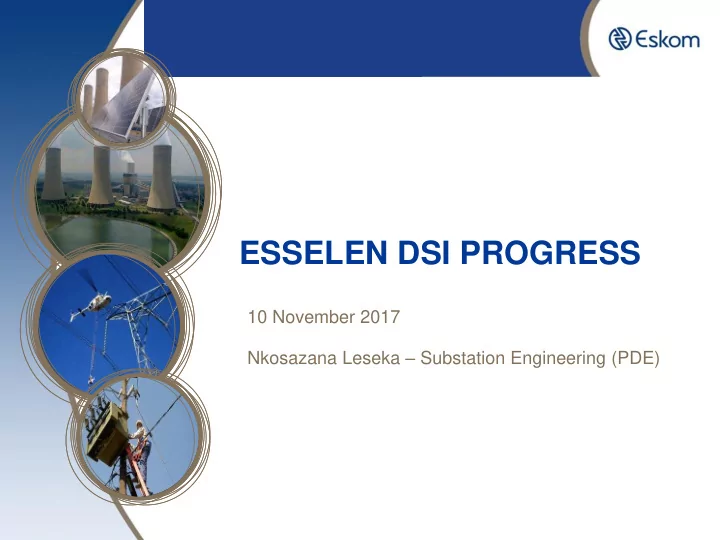

ESSELEN DSI PROGRESS 10 November 2017 Nkosazana Leseka – Substation Engineering (PDE)
Geophysical Method – Gravity Survey • Geophysical investigation involved in a simple method of ascertaining subsurface details from studying them from the surface • Achieved by measuring physical properties of the body and the interpretation is done via subsurface geology, in this case through: • Percussion Drilling – to determine the voids • DPSH – to confirm the consistency/lack of • Gravity Surveys are normally used during oil and gas investigations during mine explorations but can be used to determine the existence of karsts in the subsurface 2
Science of Gravity Survey • Uses natural gravity field of the earth and the density of the earth material becomes the controlling physical propety • Principle: • The nature of the distribution of gravity (g) on the earth surface is analyzed • If the gravity pull is more (+) – it means the subsurface body is heavier, larger and occurs at shallow depth • If the gravity pull is less (+) – it means the subsurface body is lighter • So in regions where body densities differ from surrounding rocks and the gravity field deviates • This is an indication of inhomogeneous bodies in the subsurface (can be ore bodies, oil+gas or IN OUR CASE, A KARST ) 3
Science of Gravity Survey example… 4
Why is not enough to conclude information? 5
Why is not enough to conclude information? • The areas identified for drilling are correct, however the karsts can only be confirmed by drilling • Once the drilling has been completed, then the material needs to be checked for consistency • Safety Risk Assesment for the Power Lines: • According to the method statement for the drilling, the machine to be used is 13m absolute height • The contractor in areas where there are powerlines should be clear for 13 from the outer phase of the line case the machine topples over within the vicinity 540A 6
Thank you
Recommend
More recommend